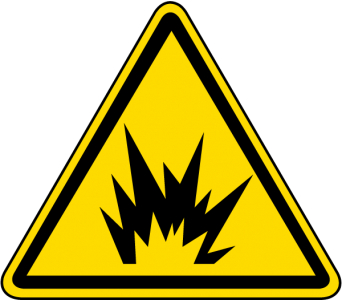More About Intrinsic Safety and Industrial Digital Thermometers
Posted May 06, 2019 by Advanced Energy Editor
.jpg)
Advanced Energy's TEGAM has a new eBook all about temperature measurement, digital thermometers and temperature probes and sensors. Here’s an excerpt below concerning Intrinsic Safety and Intrinsically Safe Thermometers. Enjoy – there’s more to come!
Intrinsic safety (IS) is a protection technique for safe operation of electrical equipment in hazardous areas. This is accomplished by limiting the energy, (electrical and thermal), available for ignition. An intrinsically safe system is one with energy levels so low they cannot cause an ignition. A potentially explosive atmosphere exists when a mixture of air gases, vapors, mists, or dusts combine in a way that can ignite under certain operating conditions. Areas with dangerous concentrations of flammable gases or dust are found in applications such as petrochemical refineries and mines.
There are two methods that certify intrinsic safety equipment: systems or parameters. Systems approval requires approvers to specify every component and evaluate the entire system. A variance to any of those components voids the approval. Parametric approval requires approvers to evaluate each device separately and assign it a set of safety or entity parameters. Entity approval allows you to connect a field device to any barrier* with compatible safety parameters.
Please note that there are separate agencies that provide approvals for certain environments. Note that many of these agencies today are coordinated. For example, the EN 60079 family of standards has been adopted by UL and CSA. Meanwhile, MSHA (Mine Safety and Health Administration – U.S. Department of Labor), is the governing agency for any equipment used in mining locations in the U.S. TEGAM did not seek approval from MSHA, therefore the TEGAM 921 Thermometer is not approved for use in mines.
For areas other than mining, the government agency responsible is OSHA (Occupational Health and Safety Administration). OSHA has authorized a group of NRTL (Nationally Recognized Testing Laboratories) to certify equipment. At this time the following laboratories are recognized:
- (Canadian Standards Association)
- ETL Testing Laboratories Incorporated
- Factory Mutual Research Corporation
- MET Laboratories
- UL (Underwriters Laboratories Inc.)
- United States Testing Co. Inc.
For intrinsically safe equipment used in transportation, the Federal Motor Carrier Safety Administration (U.S. Department of Transportation) is the governing agency. In Europe the governing agency is the European Union, (EU). The ATEX Directive 2014/34/EU covers equipment and protective systems intended for use in potentially explosive atmospheres. The Directive defines the essential health and safety requirements and conformity assessment procedures, to be applied before products are placed on the EU market. It is aligned with the New Legislative Framework policy, and it is applicable from 20 April 2016, replacing the previous Directive 94/9/EC. The latest revision at the time of this writing is December 2017.
National authorities are responsible for implementing the Directive in the EU by transposing its provisions into their legislation. As a result, EU countries and others who apply the Directive’s requirements are responsible for implementation and enforcement, as well as the management of notified bodies.
In Canada the government agency responsible is the Standards Council of Canada. Standards Council of Canada has authorized a group of testing laboratories to certify
equipment. At this time, the following laboratories are authorized:
- CSA (Canadian Standards Association)
- ETL Testing Laboratories Incorporated
- UL (underwriters Laboratories Inc.)
- C-UL (Underwriters’ Laboratories of Canada)
Are there questions you’d like answered about intrinsically safe temperature probes or TEGAM digital thermometers for industrial applications? Please reach-out to us here to get started. See our intrinsically safe digital thermometers here. Thanks for reading.
